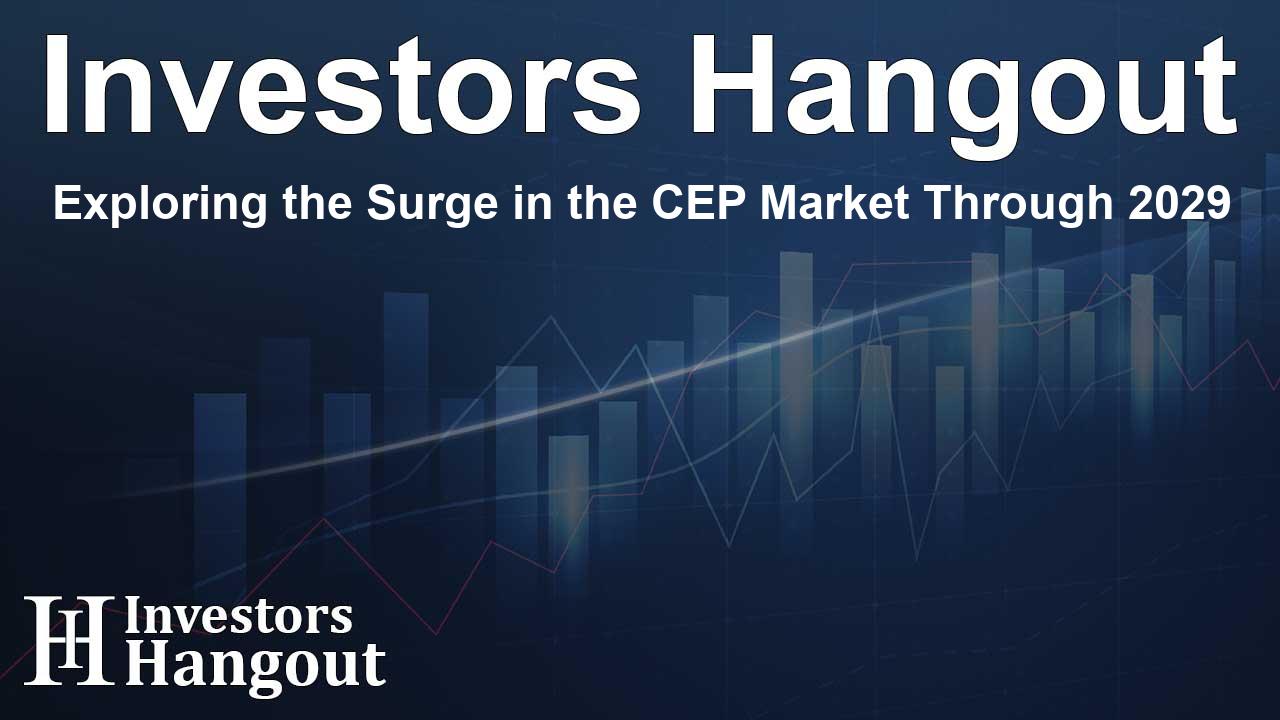Growth of the Courier, Express, and Parcel Market
The global courier, express, and parcel (CEP) market is poised for substantial growth over the coming years. Industry estimates suggest an increase in market size by USD 188.1 billion from 2025 to 2029, which is indicative of a significant expansion driven by emerging technologies and market trends.
Key Factors Driving Market Expansion
Several factors contribute to the acceleration of the CEP market. First, the rise in Free Trade Agreements (FTAs) strongly influences investments in courier services across emerging economies. This trend facilitates a stronger integration of last-mile delivery models, enhancing operational efficiencies for logistics providers. Furthermore, the integration of artificial intelligence into this sector optimizes route planning and boosts parcel tracking capabilities.
Innovations and Trends in Delivery Models
The latest trends spotlight an increasing inclination towards instant delivery services, garnering interest from startups and established companies alike. With e-commerce thriving, consumer expectations for faster and more diverse delivery options are at an all-time high.
New delivery models are emerging, encompassing hub-and-spoke systems and last-mile delivery mechanisms. Logistics companies are keenly adapting to meet consumer demands, driving competition and collaboration in the market. Major players are investing heavily in technologies that allow for same-day and immediate delivery options, thereby catering to a broader audience.
Challenges Facing the CEP Industry
Despite the pronounced growth potential, the CEP market faces significant challenges. Increased competition from both established players and startups presents a formidable barrier. Digital transformation, including the incorporation of automation and the Internet of Things (IoT), is critical. However, the rate at which some logistics companies adopt these advancements remains sluggish, posing risks to their competitive edge.
Last-Mile Delivery Complexities
Last-mile delivery remains a persistent challenge, particularly in congested urban centers. As online grocery shopping and food delivery services expand, CEP providers must ensure timely deliveries of perishable items. Sustainability is another pressing issue, with rising consumer expectations for eco-friendly practices and solutions.
Segment Analysis: Understanding Target Audiences
The CEP market encompasses various consumer segments, including B2B (Business-to-Business), B2C (Business-to-Consumer), and C2C (Consumer-to-Consumer) transactions. The increasing penetration of e-commerce platforms is fueling both B2B and B2C market categories, transforming how businesses engage in logistics.
Moreover, as e-commerce broadens, CEP providers are adapting to accommodate the heightened demand for efficient delivery systems. This includes optimizing their operations and integrating more robust tracking mechanisms to enhance customer satisfaction.
Technological Transformation and the Future of CEP
The intersection of CEP services and technology is reshaping industry standards. Automation in logistics is unlocking new efficiencies, enabling faster processing times and delivery reliability. Artificial Intelligence is playing a decisive role in reengineering operations, leading to innovations that not only reduce costs but also enhance service quality.
Furthermore, the advent of drones and autonomous vehicles offers exciting possibilities for last-mile delivery, bridging the gap between consumer demand and operational capacity. As these technologies mature, they hold the potential to revolutionize traditional logistics frameworks.
Conclusion: Navigating the Future of the CEP Market
In conclusion, the Courier, Express, and Parcel market is on an impressive trajectory towards growth fueled by evolving business models, technological advancements, and shifting consumer behaviors. As companies adapt to these changes, they must prioritize innovation, seek sustainable practices, and harness technology to remain competitive and responsive.
Frequently Asked Questions
What is the projected growth of the CEP market?
The CEP market is projected to grow by USD 188.1 billion from 2025 to 2029.
What are the key drivers for the CEP market?
Key drivers include the rise of FTAs, advancements in AI, and consumer demand for faster delivery options.
What challenges does the CEP market face?
Challenges include intense competition, slow adoption of technology, and last-mile delivery complexities.
How is technology shaping the future of the CEP market?
Technology, particularly AI and automation, is transforming logistics operations, enhancing efficiency, and improving delivery reliability.
What trends are influencing delivery models in the CEP market?
Emerging trends include instant delivery services, integration of last-mile models, and a focus on eco-friendly practices.
About The Author
Contact Ryan Hughes privately here. Or send an email with ATTN: Ryan Hughes as the subject to contact@investorshangout.com.
About Investors Hangout
Investors Hangout is a leading online stock forum for financial discussion and learning, offering a wide range of free tools and resources. It draws in traders of all levels, who exchange market knowledge, investigate trading tactics, and keep an eye on industry developments in real time. Featuring financial articles, stock message boards, quotes, charts, company profiles, and live news updates. Through cooperative learning and a wealth of informational resources, it helps users from novices creating their first portfolios to experts honing their techniques. Join Investors Hangout today: https://investorshangout.com/
The content of this article is based on factual, publicly available information and does not represent legal, financial, or investment advice. Investors Hangout does not offer financial advice, and the author is not a licensed financial advisor. Consult a qualified advisor before making any financial or investment decisions based on this article. This article should not be considered advice to purchase, sell, or hold any securities or other investments. If any of the material provided here is inaccurate, please contact us for corrections.

